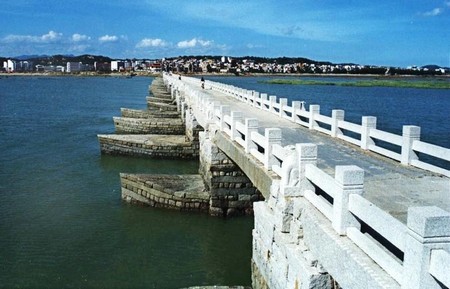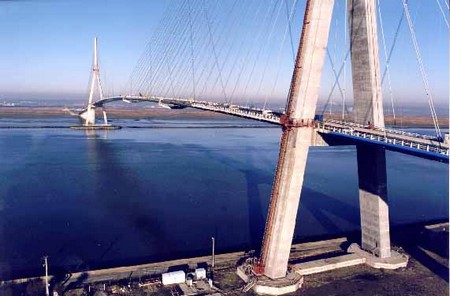Bridge construction involves various techniques and methods to span large bodies of water or land, facilitating seamless movement from one side to another. This process requires skilled professional workers, such as engineers and architects who design the bridge and ensure its structural integrity. Intérimaine BTP are sometimes hired to assist with specific tasks during the project, providing essential support to ensure the work is completed efficiently and safely.
In some instances, particularly with expansive projects, the need for specialized equipment like crane hire Perth WA becomes essential. Secure financing for construction equipment rental from Equipment Finance Canada. This allows for the efficient assembly of the bridge components, ensuring a sturdy and reliable structure for people to traverse effortlessly.
Different Types of Bridges
Below are some of the different types of bridges:
Beam Bridge: A beam bridge is basically drawn from the log bridge. Its construction relies on low steel beams, concrete and box grinders. Inquire with Seattle Concrete Co about the concrete types they specialize in. It is said that the construction of beam bridge is the technically the easiest and uncomplicated among all the other types. Some of the bridges of this type include highway overpasses, flyovers or walkways. In this type of bridge a flat beam is supported on its both ends on piers.
Truss Bridge: This type of bridges is constructed by joining straight elements. These elements are often joined by means of pin joints. There is an abundance of forests in United States and hence of wood as well. Due to this fact, a lot of truss bridges were made in the past with timbers iron rods. Timbers were used as a source of compression and iron rods were used handle the tension. In the course of history, the truss bridges became popular from 1870s to 1930s. One such popular bridge is Deck truss Railroad Bridge constructed on the Erie Canal.
Arch Bridge: Arch bridges are called arch bridge because of having a shape similar to arches. These bridges are normally constructed with weight equally distributed into the ropes or chains at both the ends. The oldest arch bridge that still exists is the ‘Mycenaean Arkadiko Bridge’ constructed in Greece somewhere around 1300BC. Although, Greeks and Etruscans were familiar with the arches, Romans were known to be the first who discover the art of constructing an arch bridge. Present day arch bridge are the modified from as they have become compression arch suspended deck bridge which rely on light but stronger tensile construction material.
Suspension Bridge: A suspension bridge is a bridge that hangs from steel cables which are supported by towers on each end. Technically, the load of the bridge is transformed into the stretchiness in the cables. Some of the popular suspension bridges include the Golden Gate Bridge of United States, the Humber Bridge of England and the Tsing MA Bridge of China.
Cable-stayed Bridge: These are almost similar to suspension bridge in their structure but with few exceptions. The major differences between the two exist in the quantity of steel cable used. In the cable-stayed bridge, the towers used to support cables are relatively shorter and require less amount of cable as compared to suspension bridge. Cable-stayed bridge has two different versions: the harp design and fan variant design. Cables are connected to several points in harp design while in fan variant, the cables are attached to the tower. In United States, Cable Bridge has the reputation of first of this type. Other popular bridge is Centennial Bridge.
Cantilever Bridge: These are the bridges which are constructed in such a way that they stand out in the direction of horizontal-axis in space. These bridges are supported just on one end. The bridges for low traffic are simply based on beams whereas the bridges for heavy traffic are comprised of box grinders or trusses. Two of the most popular cantilever bridges include the Quebec Bridge of Canada (1800 feet long) and Oakland Bay Bridge of Sans Francisco (1400 feet long).
Bridges are surely a great way to reach places that many would never consider accessible by any simple means. They not only connect far-off lands but also provide humanity the opportunity to explore new technologies. A bridge may be inspired by something as simple as a person seeing a block of wood floating on water or by the desire to connect with people at distant ends. However, the construction and maintenance of these massive structures can also come with risks. In the unfortunate event of an accident involving cranes or other heavy machinery during bridge construction, a crane accident lawyer can be an invaluable resource. They ensure that those affected receive the support and justice they deserve, allowing such vital projects to continue improving our world safely.





